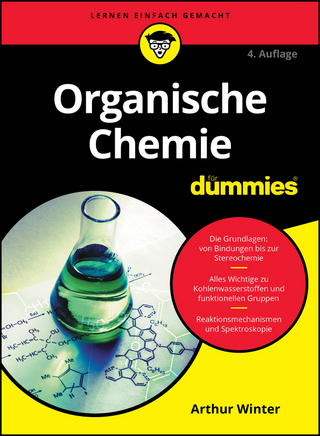Supramolecular Chemistry - Fundamentals and Applications
Springer Berlin (Verlag)
978-3-540-01298-6 (ISBN)
In this book we delve into the field of supramolecular chemistry, which deals with supermolecules. A supermolecule in this sense can be defined as a "molecule beyond a molecule" - a large and complex entity formed from other molecules.
The book conveys the relevance and fascination of the fast-growing field of supramolecular chemistry to advanced undergraduate students, and provides an overview of it to young scientists and engineers. Readers will find that supramolecular chemistry is associated with many attractive disciplines of chemistry, including molecular recognition, molecular topology, self-organization, ultrathin films, molecular devices and biomolecular systems. Supramolecular chemistry is still a very young field, and so it is difficult to predict its future, but it has already secured a firm position in the chemical sciences. For example, biotechnology and nanotechnology are expected to lead to technological revolutions inthe near future that will dramatically affect our lifestyles and economies. Supramolecular chemistry is an indispensable tool in these technologies. This book was originally written as part of a series of Japanese chemistry textbooks. The authors hope that this book be warmly accepted by English language readers as well.
Overview - What is Supramolecular Chemistry?.- The Chemistry of Molecular Recognition - Host Molecules and Guest Molecules.- Controlling Supramolecular Topology - The Art of Building Supermolecules.- Molecular Self-Assembly - How to Build the Large Supermolecules.- Applications of Supermolecules - Molecular Devices and Nanotechnology.- Biological Supermolecules - Learning from Nature.
From the reviews:
"The book covers many of the standard molecular building blocks such as cyclodextrins, cyclophanes, and calixarenes. ... The book concentrates on a few well-chosen systems, describing them extensively and with enthusiasm. It is particularly good on interfacial systems where the authors are clearly world leaders. ... Overall, then, this book presents a cheerful and optimistic picture of supramolecular chemistry ... . It might be good for inspiring graduate students to learn more ... ." (Jeremy K. M. Sanders, Materials Today, Vol. 10 (6), 2007)
From the reviews:"The book covers many of the standard molecular building blocks such as cyclodextrins, cyclophanes, and calixarenes. … The book concentrates on a few well-chosen systems, describing them extensively and with enthusiasm. It is particularly good on interfacial systems where the authors are clearly world leaders. … Overall, then, this book presents a cheerful and optimistic picture of supramolecular chemistry … . It might be good for inspiring graduate students to learn more … ." (Jeremy K. M. Sanders, Materials Today, Vol. 10 (6), 2007)
| Erscheint lt. Verlag | 22.5.2006 |
|---|---|
| Zusatzinfo | IX, 208 p. |
| Verlagsort | Berlin |
| Sprache | englisch |
| Maße | 155 x 235 mm |
| Gewicht | 350 g |
| Themenwelt | Naturwissenschaften ► Chemie ► Organische Chemie |
| Schlagworte | Carbon Nanotubes • Fullerenes • host-guest-chemistry • Organic Chemistry • supramolecular chemistry • Supramolekulare Chemie |
| ISBN-10 | 3-540-01298-2 / 3540012982 |
| ISBN-13 | 978-3-540-01298-6 / 9783540012986 |
| Zustand | Neuware |
| Informationen gemäß Produktsicherheitsverordnung (GPSR) | |
| Haben Sie eine Frage zum Produkt? |
aus dem Bereich




